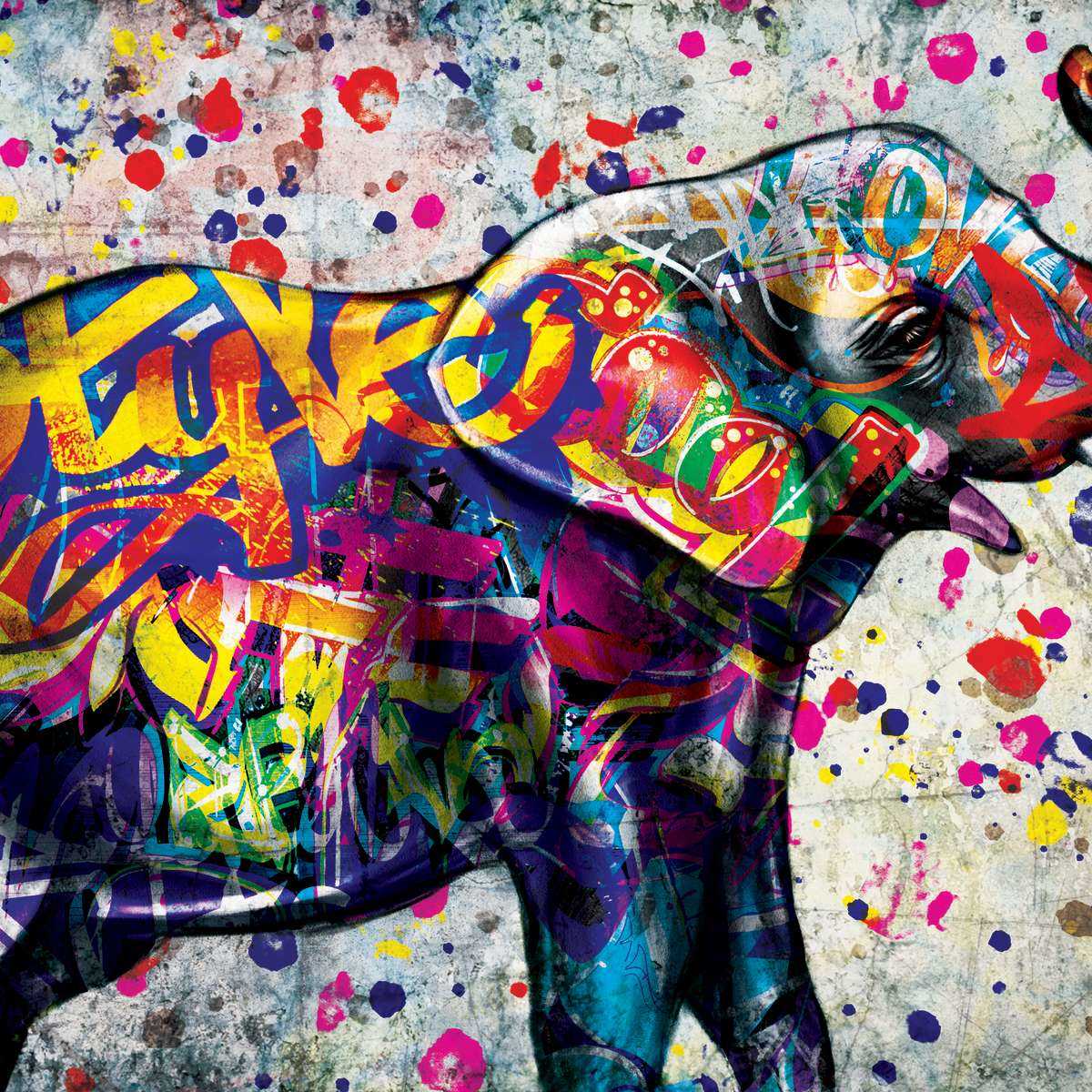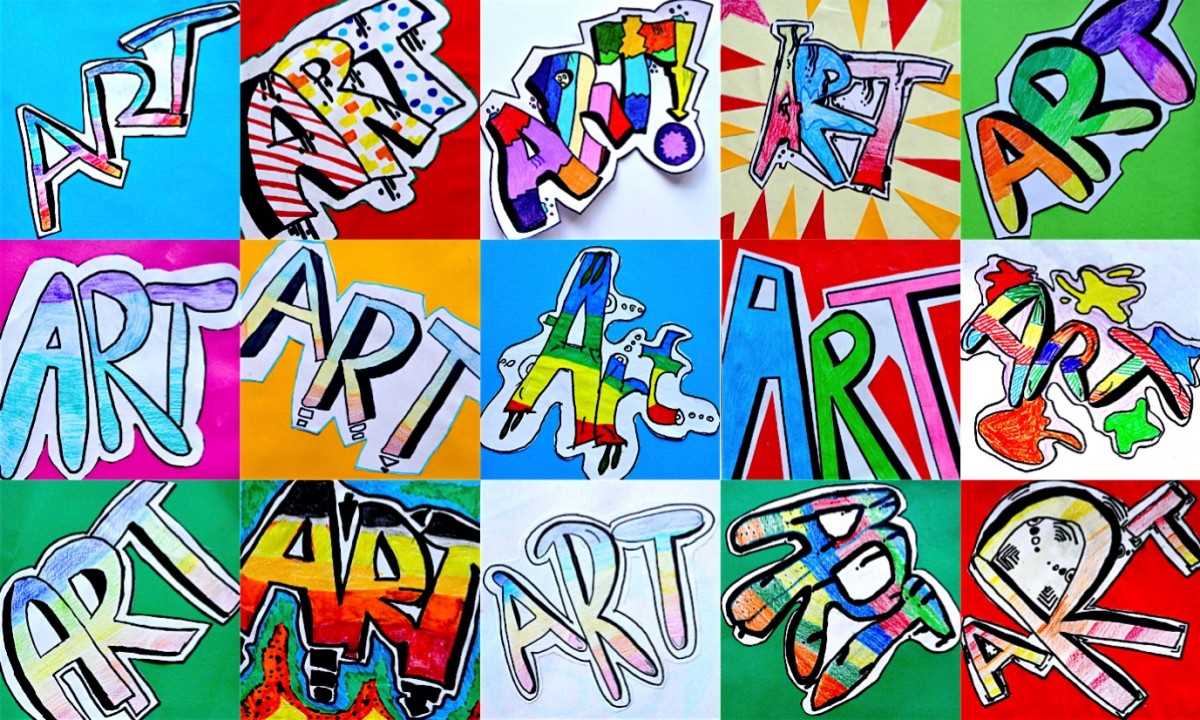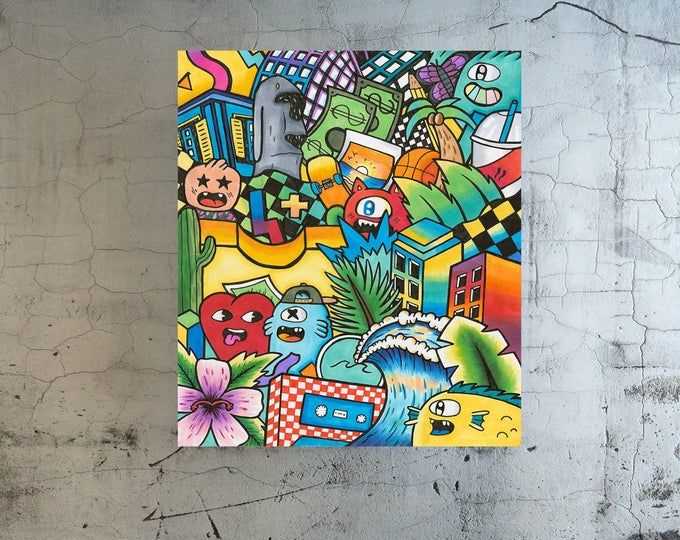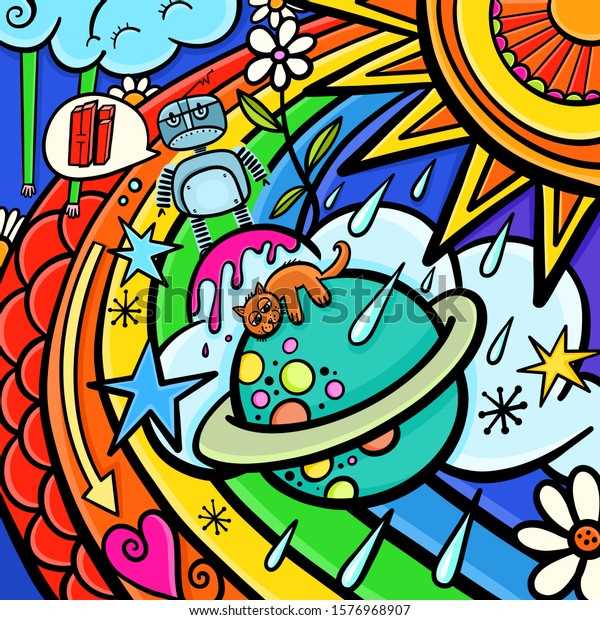
Graffiti, a form of urban art that found its roots in the late 1960s, has become a major cultural phenomenon. Originally seen as a rebellious act of vandalism, graffiti has evolved into an influential art form that has the power to inspire, provoke, and challenge societal norms. This unique style of artistic expression can be found in cities across the globe, adorning walls, train cars, and public spaces with vibrant colors and intricate designs.
What sets graffiti style art apart from other art forms is its strong connection to the urban environment. Unlike traditional art displayed in galleries and museums, graffiti is accessible to everyone, regardless of social status or education. It speaks directly to the people, reflecting the cultural, social, and political issues of the community in which it exists. Graffiti has the power to transform mundane and neglected spaces into vibrant, thought-provoking canvases, serving as a powerful voice for those who may not have the means to express themselves in other ways.
While some view graffiti as a nuisance or an act of vandalism, many recognize it as a legitimate art form deserving of respect and recognition. Museums around the world have dedicated exhibitions to graffiti, showcasing its evolution and impact on contemporary culture. Graffiti style art has also influenced other art forms, such as fashion, graphic design, and advertising. Its influence can be seen in the works of renowned artists and designers who draw inspiration from the raw energy and creativity of this underground movement.
Graffiti has long been a debated form of art. While some may consider it vandalism, others argue that it is a legitimate expression of creativity.
Graffiti art often reflects the social and political issues of a community. It can act as a powerful form of protest, allowing individuals to voice their opinions and challenge the status quo. In this way, graffiti serves as a medium for marginalized communities to reclaim public spaces and make their voices heard.
Additionally, graffiti artists exhibit a high level of skill and technique in their work. From intricate lettering to complex murals, graffiti requires a deep understanding of color theory, composition, and design principles. Many artists spend years perfecting their craft and honing their individual style.
Furthermore, graffiti can transform plain and mundane surfaces into visually stimulating works of art. Derelict buildings, alleyways, and abandoned structures become vibrant canvases that engage with the surrounding environment. In this sense, graffiti enriches urban landscapes and adds cultural value to a community.
It is important to note that graffiti, like any other art form, can be interpreted differently by individuals. What one person may see as an eyesore, another might appreciate as a masterpiece. This diversity of perspectives is what makes graffiti art so unique and thought-provoking.
| Pros of Graffiti as Art | Cons of Graffiti as Art |
|---|---|
| Gives a voice to marginalized communities | Can be seen as vandalism |
| Showcases skill and technique | May contribute to urban decay |
| Transforms plain surfaces into works of art | Can be controversial and divisive |
The Unique Style of Graffiti Art
Graffiti art is known for its distinctive style and bold, eye-catching designs. It is a form of artistic expression that has gained popularity in cities around the world. What sets graffiti art apart is its ability to transform ordinary spaces into vibrant displays of creativity and self-expression.
One of the most striking aspects of graffiti art is its use of vibrant and contrasting colors. Graffiti artists often utilize a wide range of hues to create visually stunning masterpieces. These bright colors draw attention and make their work stand out from its surroundings.
Another defining characteristic of graffiti art is its use of bold and expressive typography. Many graffiti artists are skilled in the art of lettering, using a combination of different fonts, styles, and sizes to create unique and attention-grabbing text. This typography adds depth and dimension to their work, making it instantly recognizable.
Graffiti art also embraces a variety of techniques and materials. Spray paint is a commonly used medium, as it allows for quick application and vibrant colors. Stencils, markers, and brushes are also often used to create intricate details and textures. These various techniques and materials add complexity and depth to graffiti art, making it an ever-evolving and innovative art form.
Furthermore, graffiti art often carries a strong message or social commentary. Artists use their work as a platform to address important issues such as inequality, racism, and environmental concerns. By incorporating powerful visuals and thought-provoking symbols, graffiti art serves as a means of communication and a catalyst for dialogue.
Exploring the Work of Graffiti Artists
Graffiti style art has become an influential and captivating form of expression in recent years. From vibrant street murals to intricate tags, graffiti artists continue to push the boundaries of creativity and leave their mark on the urban landscape.
One of the key aspects of graffiti art is its ability to communicate messages and emotions. Many graffiti artists use their work to comment on social and political issues, such as inequality, gentrification, and environmental concerns. Through their art, they aim to provoke thought and spark conversations within the community.
Each graffiti artist has their own unique style and techniques. Some artists prefer to work with stencils, creating precise and detailed images, while others prefer freehand spraying, allowing for more fluid and spontaneous designs. Regardless of the method used, graffiti artists often demonstrate exceptional skill in manipulating line, color, and composition to create visually striking pieces.
Another fascinating aspect of graffiti art is the element of risk and the concept of public space. Many artists must navigate legal and ethical boundaries in order to execute their work. The allure of the forbidden can add an additional layer of intrigue and excitement to the art form, pushing artists to explore new techniques and locations.
It is important to note that graffiti style art is not limited to just spray paint on walls. Some artists have expanded their creative practice to include other mediums and platforms. From canvas paintings to digital illustrations, graffiti artists continue to adapt and evolve their work in response to the changing art landscape.
The Impact and Influence of Graffiti Style

Graffiti style has had a significant impact and influence on various aspects of art, culture, and society. From its origins as an underground subculture to its current recognition as a legitimate form of artistic expression, graffiti style has evolved and captured the attention of people worldwide. Here are some ways in which graffiti style has made its mark on the world:
1. Urban Aesthetics

Graffiti style has transformed the visual landscape of cities around the globe. With its bold colors, intricate designs, and dynamic lettering, graffiti art has added a vibrant and edgy element to urban environments. It has injected creativity into mundane spaces, transforming blank walls and surfaces into powerful visual narratives.
2. Political and Social Commentary
Graffiti style serves as a powerful platform for political and social commentary. Many graffiti artists use their work to express their opinions on various issues such as inequality, injustice, and governmental policies. By painting thought-provoking murals and tagging powerful messages, graffiti artists have the ability to spark conversations and raise awareness about important societal issues.
Graffiti art has also provided a voice for marginalized communities, allowing them to express their identity, culture, and struggles. It has acted as a means of reclaiming public spaces and challenging dominant narratives.
3. Influence on Contemporary Art

Over the years, graffiti style has greatly influenced the contemporary art world. It has challenged traditional notions of what constitutes art and has broadened the definition of artistic expression. Many renowned artists have incorporated graffiti elements into their work, blurring the boundaries between street art and high art.
Graffiti style has also inspired new art movements such as street art and urban art. Artists who started as graffiti writers have transitioned into successful careers as painters, sculptors, and multimedia artists, with their graffiti roots evident in their work.
4. Empowerment and Community Building
Graffiti style has been instrumental in fostering a sense of empowerment and community building. By painting collectively in public spaces, graffiti artists create a sense of belonging and shared purpose. They form communities and establish networks, supporting and inspiring each other in their artistic endeavors.
Graffiti art initiatives and festivals have further strengthened community bonds and revitalized neighborhoods. They attract visitors, promote local businesses, and instill a sense of pride in the community.

I am a mural enthusiast and a fervent admirer of street art. Rather than creating murals myself, I am passionate about collecting them. My love for street art knows no bounds. I am dedicated to curating and cherishing these artworks that grace the streets. My collection stands as a testament to my profound appreciation for this form of artistic expression.
read about me



